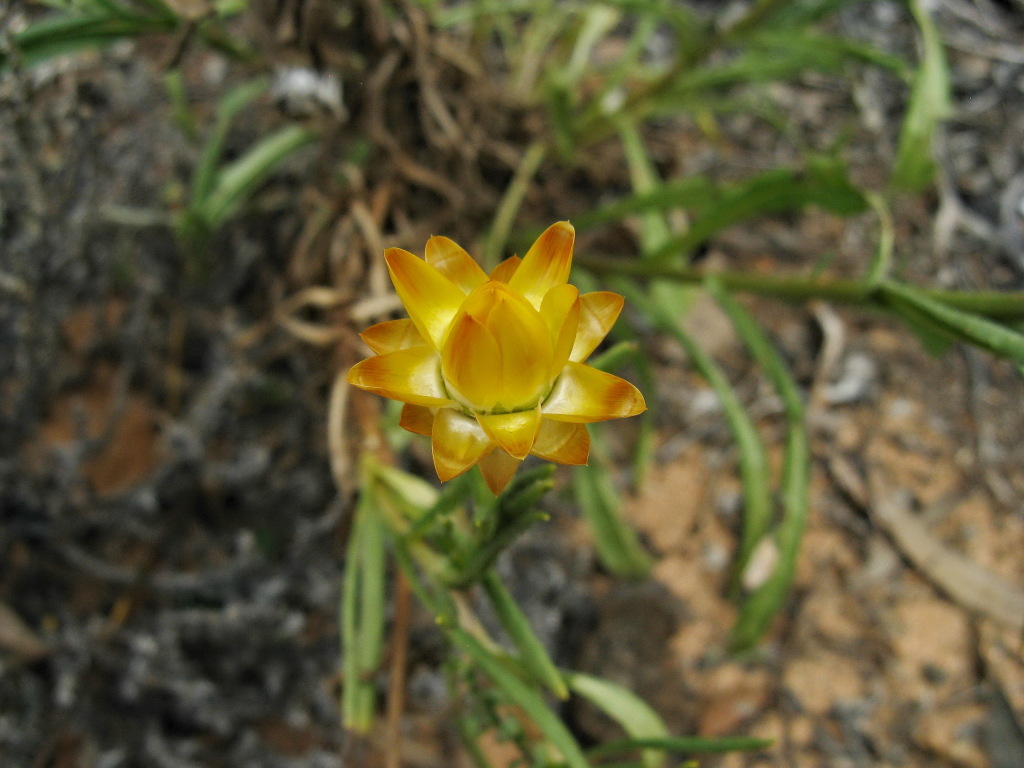Xerochrysum bracteatum
(Vent.) Tzvelev Golden EverlastingAnnual (?to perennial), taprooted herb, 10–100 cm high; stems more or less erect, branched, glandular, with septate-papillose and/or arachnoid hairs. Leaves elliptic to linear, 3–12 cm long, 0.3–3.0 cm wide, with septate-papillose and/or arachnoid hairs, apex acute or mucronate. Capitula terminal, few to many in panicle-like or corymbose inflorescence, 1–5.5 cm diam.; outer involucral bracts obtuse, inner bracts acute, 0.5–2.0 cm long, golden-yellow, smooth, apex mucronate; florets yellow, female florets in a single outer series. Cypselas c. 3 mm long; pappus yellow, 5–9 mm long. Flowers all year (mostly spring).
LoM, MuM, Wim, VVP, VRiv, MSB, RobP, MuF, GipP, Gold, CVU, GGr, DunT, NIS, EGL, EGU, WPro, HSF, HNF, OtR, MonT, HFE, VAlp. Also WA (native and naturalised), NT, SA, Qld, NSW, Tas. Widespread, in various habitats, often common following disturbance such as fire or earthworks.
Collins et al. (2022) describe the segregate species X. bicolor for plants in central-western and south-western Victoria with hispid stems and X. hispidulum for annual plants with variably hispid leaves and acute style appendages from the north west of Victoria. While plants from throughout western Victoria appear distinct from those in the east (X. bracteatum sens. strict.), many of the characters given for these segregate taxa either do not appear to be unique to, or consistent within these taxa. Sampling in this study appears to have been somewhat limited (at least within Victoria) and many specimens at MEL are not readily identifiable to either of these two species. As such this taxonomy is not being followed here, with a broadly defined X. bracteatum sens. lat. retained.
 Spinning
Spinning


